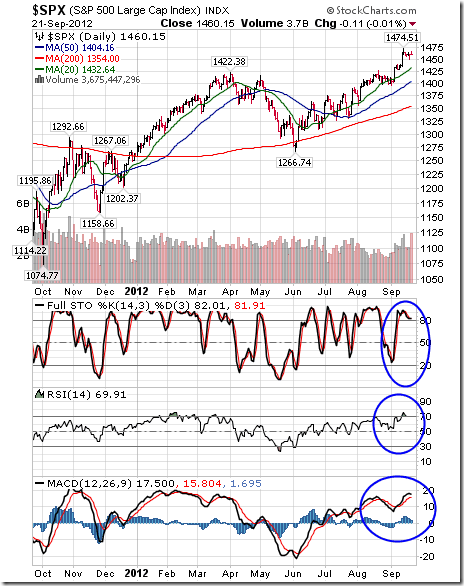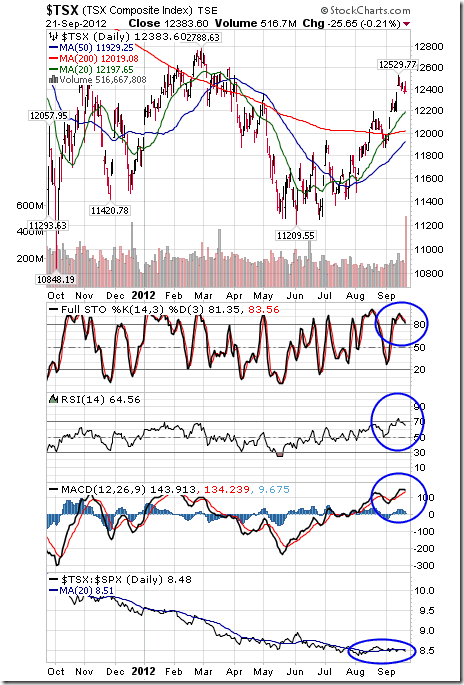Everyone agrees that high energy prices are here to stay, so most companies should perform well in the long run. But what about near-term opportunities? Taylor MacDonald, associate portfolio manager at Pathfinder Asset Management, is looking to service companies for industry outperformance. In this exclusive interview withThe Energy Report, he describes why proprietary niche service companies virtually own the markets they are establishing
COMPANIES MENTIONED : AFRICA OIL CORP. : CORTEX BUSINESS SOLUTIONS INC. : HUSKY ENERGY INC. : NEW ZEALAND ENERGY CORP. : NXT ENERGY SOLUTIONS : PRD ENERGY INC. : RIDGELINE ENERGY SERVICES INC. : SYNODON INC. : TAG OIL LTD.
The Energy Report: It’s been almost a year and a half since your last interview. We’ve had lots of ups and downs in the market. What is your current outlook for oil and gas? Are prices going to be stable or do you expect significant movement one way or the other?
Taylor MacDonald: Eric Sprott put it best when he said something along the lines of “Tell me how many greenbacks the Federal Reserve is going to print and I’ll tell you where oil prices are going” Greater easing is bad for the U.S. dollar and good for things priced in dollars. In a supply-constrained environment, the potential for shocks exists, but demand will continue to grow as long as oil prices don’t run too quickly or so far as to cause too much of a drag on global economic activity.
If there’s an incident in the Middle East that shuts down oil infrastructure in Saudi Arabia or the Strait of Hormuz, we could easily see oil at $150/barrel (bbl) or even $200/bbl. Hopefully that would be temporary. But irrespective of that possibility, we are quite bullish on the energy space. Until someone develops something to supplant it, we are still going to need a lot of oil and gas to fuel global economic activity.
TER: Would additional easing make much difference?
TM: I don’t think there’s any end in sight to easing, which will only continue to devalue the dollar—and that is good for commodities priced in dollars. Realistically, we are looking at steadily higher oil prices going forward.
TER: It seems that most of the easy oil has been found, at least onshore. A lot of activity is taking place offshore in places people didn’t consider potential oil-producing areas. Is this the future of oil and gas production?
TM: That is certainly going to be where we’ll continue to see a lot of action. We look at both new exploration on old fields and new exploration on new fields. Pathfinder has done very well in the past with holdings in Tag Oil Ltd. (TAO:TSX.V) and New Zealand Energy Corp. (NZ:TSX.V; NZERF:OTCQX), two companies that are developing what was previously seen as an “exotic basin.” We’ve also done very well with our holding of Africa Oil Corp. (AOI:TSX.V). We think that companies going into underdeveloped or unproven basins are ripe for the picking. The other place we’ve seen a lot of potential is in companies going into past-producing fields. One company in this arena, which we have a large position in and from which I recently got an update from management is PRD Energy Inc. (PRD:TSX.V). It’s acquiring acres and acres of land in Germany, Lower Saxony, and going back into fields that produced until World War II—and some more recently. PRD is going to rework them by applying modern extraction techniques to fields that have produced a mere fraction of their potential. This could be one of the better plays we see over the next year.
TER: Would you classify these as unconventional oil plays or extensions of existing technology?
TM: These are about as conventional as things get. I think the money that’s going to be made at the moment will be on normal oil and gas production. There is a lot of potential in unconventional reservoirs and new extraction techniques, and in applying conventional techniques to unconventional reservoirs. But right now, the simpler it is, the better.
TER: Have there been any major developments in some of the companies that you talked about last year?
TM: There’s a saying in the mining business that the best way to make money in a mining boom is to be in the business of picks and shovels. We are looking beyond that to “Picks and Shovels 2.0.”
In the oil and gas space, a handful of companies are applying new technologies to old industry problems. The first one is Ridgeline Energy Services Inc. (RLE:TSX.V), which we discussed at length in April 2011. It’s a cutting-edge energy services and water treatment company applying a proprietary technology to treat water from the industrial and commercial wastewater markets. We feel that Ridgeline is likely to be the victor in the race to provide the best solution for the treatment of dirty water from fracking—and really for most kinds of industrial process flow-back water.
Ridgeline made the transition from a relatively short research and development (R&D) period (three years) to full commercial deployment, and boasts a formidable list of major clients, including ConocoPhillips (COP:NYSE), Devon Energy Corp. (DVN:NYSE), Enbridge Energy Partners L.P. (EEP:NYSE), EOG Resources Inc. (EOG:NYSE) and Progress Energy Resources Corp. (PRQ:TSX ), to name a few. When we discussed Ridgeline last year, the shares were trading in the $0.50 range. After a meteoric rise to a high of $1.41 last March, the price has come back down to earth and is now settling in the high $0.50s. We recently added a sizeable position to our Pathfinder Partner’s Fund and it is now our single largest share holding. We believe investors would be wise to pick up a position in the company here.
After a number of significant developments, Ridgeline is far better positioned than it was last year. First, it acquired 100% of the global rights for its technology for just less than 35 million shares. This was expected, but still a milestone for the company. Second, the company added a strong new CFO and a new COO as well as a Fortune 500 director. Third, the company set up a fully operational commercial facility with EOG Resources in New Mexico, which we visited earlier this year.
Ridgeline also finalized an agreement to purchase an industrial wastewater pretreatment facility in Los Angeles, where it’s currently treating industrial wastewater streams. Although this application doesn’t get the same attention as the company’s work in the oil and gas space, it has more profitable margins that are multiples of what is seen in oil and gas. And the near- and mid-term revenue growth from the facility should underpin Ridgeline stock at a higher price.
Lastly, the company started manufacturing its water storage units, which are bladder-and-manifold systems. The growth of competitor company Poseidon Concepts Corp. (PSN:TSX) has shown that the market for water storage in the oil and gas industry is massive. Ridgeline’s storage system may not have the same growth, but we do expect it to be a significant contributor to sales and profits as it is rolled out.
This treats a huge and growing problem of water usage and disposal when fracking. It is cost competitive with down-hole disposal—if not cheaper—and also allows reuse of the water in the next frack. Not only does it save on the disposal cost but also on water acquisition cost. This is my favorite company and our largest holding.
TER: What are the growth prospects in terms of revenues?
TM: I expect the company will bring in $27 million (M) in the next year, and then $55–70M the following year. This will be a very high-margin business, especially as Ridgeline branches out into industrial wastewater treatment and into its water storage system. The water storage uses bags, as opposed to Poseidon’s system, which uses giant “kiddie” pools full of water. Poseidon’s system works much better in Alberta, where surface land area is a constraint. The bag system lays flat on the ground and is also fully contained. If land isn’t an issue, as in Texas, and where evaporation is a huge issue, such as with the current drought, the bag system presents a very interesting solution to water storage needs.
TER: And the company is going to make money regardless of what oil prices do because these are services that companies need to use one way or another.
TM: Definitely. Ridgeline also has two other businesses. One of them is treating hydrocarbon contaminated soils at its GreenFill sites; there are many throughout Alberta. The other is an underlying environmental consulting business, which was how the company started. These other business streams help to support the company and add to both the top and bottom lines.
TER: With regard to profit margins, how sensitive to oil prices are most companies at this point, relative to future exploration activities and the profits that they are making right now?
TM: Cost inflation is something that every single business space is currently experiencing, not just oil and gas. Companies must do whatever they can to become more efficient and save on exploration, development and production costs, etc. One company we are very keen on is Calgary-based NXT Energy Solutions (SFD:TSX.V; NSFDF:OTCBB), which has a disruptive, patented and patent-pending airborne survey technology for oil and gas exploration called Stress Field Detection (SFD).
SFD is a little difficult to explain, but it’s essentially a jet with a passive sensor array on board that flies a grid over large swaths of land looking for drops in the gravity stress field. Surveys can be completed in one-tenth of the time and cost of 2-D and 3-D seismic surveys. This doesn’t replace seismic, but rather pinpoints where to shoot the seismic. It allows companies to survey hard-to-reach areas with virtually zero environmental impact. The technology is fully proven and can be used onshore, offshore, and in mountainous terrain. It’s been used and verified by Pacific Rubiales Energy Corp. (PRE:TSX; PREC:BVC), Pengrowth Corp (PGH:NYSE), Pemex (PEMEX:MSX), BP Colombia (NYSE:BP) and Ecopetrol (Colombia’s national oil company).
To envision the process, imagine a river with a rock in the middle. As the river, an analogue for the stress field, reaches the rock, it will wrap around it. This means that the river, or again, the stress field, will have to change direction, which shows up in the gravity field, where the SFD can detect it. It’s based on quantum physics. Flying a grid pattern, the SFD equipment measures and detects orientation changes in that stress. A trapped reservoir, for example, will affect the SFD, and allows delineation of prospective areas. The fluid could be oil, gas and/or water. The resulting data shows exactly where to shoot your 2-D and 3-D seismic.
This technology slashes permitting time, lessens environmental impact, and can literally save a company up to 90% on seismic acquisition costs. The technology only requires a flight plan, not exploration permits, which allows NXT to mobilize quickly instead of waiting up to three years just for the seismic permit. SFD also improves the success rate dramatically on wildcat exploration wells in frontier areas. NXT Energy has a growing revenue base and client list, with a rapidly increasing acceptance of the technology. It’s also profitable on an earnings-per-share (EPS) basis over the last two quarters, and is a well-held and well-structured company. We think the company’s future is very bright.
TER: Is this somewhat similar to airborne geophysical surveys for mineral deposits?
TM: Yes. But I would say this is much more precise in that it can tell you exactly where to find million-barrel fields. There’s also the ability to locate water aquifers. Who knows where it could lead? This is one of the most interesting technologies I’ve seen in the business in my years in the industry.
TER: That’s definitely a revolutionary technology. What else do you like in the services?
TM: This may not sound like the sexiest business on the planet, but in some ways it is. Cortex Business Solutions Inc. (CBX:TSX.V) provides an electronic procurement and invoicing system for the oil and gas business. It set up an electronic network to process invoices and convinced Husky Energy Inc. (HSE:TSX) to essentially come on as a beta test. Let’s say Husky operates a hub with 10,000 (10K) different suppliers, ranging from modular assembly to pipe fabrication to wiring to meals and housing for employees, etc. A big rush of invoices come in at the end of the month and all are prone to human error. Using the Cortex system, every time a supplier initiates a document they’ll pay a transaction fee of between $0.25–2.50 depending on the number of invoices sent in a month while the hubs pay a capped monthly fee in the thousands to tens of thousands of dollars. As you can imagine, the system started to take hold.
Husky streamlined invoice receipt and processing functions, saving millions of dollars per year. It even mandated that its suppliers all join the Cortex system. Cortex has now signed more than 40 major buying organizations in Canada and the U.S. onto the system, including such major names as Apache Corp. (APA:NYSE), Hilcorp (private), Energen (EGN:NYSE), Bonavista Energy Corp. (BNP.UN:TSX) and Murphy Oil Corp. (MUR:NYSE). I’d also point out that Cortex has also boarded over 8,000 suppliers to the system and that many of those suppliers are turning into hubs themselves, demonstrating accelerated acceptance. Every added hub creates a new network effect, because most suppliers don’t work for just one company. As you add another hub, your average revenue per supplier, or ARPS, goes up. What I refer to as “manifest destiny” will likely enable Cortex to take over the oil and gas space.
The company’s revenues will grow and multiply. I believe it’s at the beginning of that hockey stick curve we all love to talk about. Cortex is about to turn the corner on profitability and cash flow, and the modeling I’ve done shows the numbers getting pretty heady a year or two out.
TER: Do you think Cortex will lock up the whole business, since there doesn’t appear to be anybody else that’s made significant inroads?
TM: It has signed up two utilities clients, and is also looking into the construction sector. Every major type of industry can probably make their systems better with Cortex. I think we are just starting to see Cortex’s system take hold and it’s one of the ways that oil and gas companies can fight rising costs in other areas of their businesses.
TER: What are your expectations for the company at this point?
TM: It did about $4.6M over the last year or so, and is trading at $0.18. From January 2013 and moving one year forward, I expect roughly $0.04 of free cash flow per share. Applying a 10 times multiple to that, which is justifiable given the growth curve, we can easily see a double from here. It went from signing one hub a month to four, then six, and now just announced that it signed a total of seven major buying organizations to the system in August. The worse things get for the oil and gas companies, the more they are going to need a service like this, because they are going to want to control costs and have a better handle on information. This is one of the best companies I’ve seen—and because it’s so simple it is very difficult for it to go wrong. We are the company’s second largest shareholder, after Fidelity.
TER: What else do you like?
TM: Another company we find very interesting is Synodon Inc. (SYD:TSX.V), which has developed and field-tested a remote gas-sensing technology called realSens, which it purchased from the Canadian Space Agency and has invested $47M in, to date. This promises to be a game-changer in the gas detection space. There are a range of applications, but the most near-term opportunity is in the gas transmission space, where the sensor is mounted on a helicopter that flies gas pipelines to detect any leaks in both industrial and commercial transmission. Two percent of all gas put into a pipeline doesn’t make it to the other end. More than $300M is spent and more than 2M pipeline leaks are detected globally every year. Synodon’s competitor dominates 80% of that $300M. That alternative method involves manually walking the lines with a “sniffer” device that detects gas. It’s inefficient and extremely costly. There’s also a large legislative environmental concern, which could really give Synodon a push.
This is a best-in-class technology and Synodon has some strategic partners already lined up, like TransCanada Corp. (TRP:TSX) and Enbridge Inc. (ENB:NYSE). The contracts are starting to roll in and the company has been finding massive leaks that previously went undetected.
The reason we got involved with this story is because Paul van Eeden, a preeminent resource newsletter writer, has come on as a director and owns over 20% of the company. That was the vote of confidence we needed to look deeper. This is, without a doubt, a best-in-show company in terms of cost, speed and efficiency, and we think it will become one of the go-to technologies oil and gas producers and distributors use to ensure efficiency and not leave any money on the table.
TER: Is this another revolutionary technology that could get a lock on a particular market?
TM: Absolutely. I think the legislative push could soon require companies to fly pipelines at pre-stated intervals.
TER: Do you like any more conventional plays?
TM: We continue to look for opportunities, and like companies that are applying either new technologies to old basins or old technologies to new basins. There are lots of different ways to make money in this business.
TER: These are interesting stories and we’ll be watching to see how things develop. Thanks for joining us today, Taylor.
TM: My pleasure.
Taylor MacDonald is an associate portfolio manager at Pathfinder Asset Management Limited. He graduated from the Wharton School, University of Pennsylvania, with a bachelor’s in economics in 2004. Prior to Pathfinder, he worked in equity research at Raymond James Ltd. in Vancouver, investment banking with Haywood Securities (UK) Ltd. in London, England, and institutional equity sales at RenCap Securities in New York. He has been a CFA Charterholder since 2009 and is a Level II CAIA candidate.
Want to read more exclusive Energy Report interviews like this? Sign up for our free e-newsletter, and you’ll learn when new articles have been published. To see a list of recent interviews with industry analysts and commentators, visit our Exclusive Interviews page.
DISCLOSURE:
1) Zig Lambo of The Energy Report conducted this interview. He personally and/or his family own shares of the following companies mentioned in this interview: None.
2) The following companies mentioned in the interview are sponsors of The Energy Report: New Zealand Energy Corp. Streetwise Reports does not accept stock in exchange for services. Interviews are edited for clarity.
3) Taylor McDonald: I personally and/or my family own shares of the following companies mentioned in this interview: Ridgeline Energy Services and Cortex Business Solutions. I personally and/or my family am paid by the following companies mentioned in this interview: None. I was not paid by Streetwise Reports for participating in this interview.





















